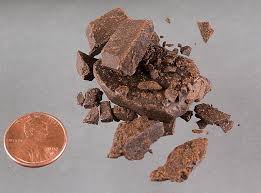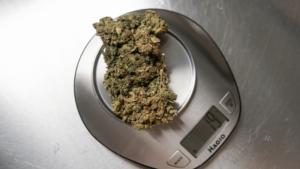Hash Weed: The Basics
Hash weed, often simply referred to as “hash,” is a concentrated form of cannabis made from the resin of the cannabis plant. This resin, known as trichomes, contains the highest concentrations of cannabinoids, particularly tetrahydrocannabinol (THC), the psychoactive component responsible for the plant’s effects. Hash weed has been used for centuries across various cultures for its potent effects and unique qualities.
Production Methods
The process of making hash involves collecting and compressing the resin glands from the cannabis plant. There are several methods to produce hash weed, each affecting the final product’s quality and characteristics:
- Hand Rubbed Hash: This traditional method involves rubbing the cannabis plant’s flowers between the hands, allowing the resin to collect. The resin is then scraped off and compressed into a solid form.
- Dry Sifting: In this technique, cannabis plant material is sieved through a series of screens to separate the trichomes from the plant matter. The collected trichomes are then pressed into hash.
- Ice Water Extraction: Also known as bubble hash, this method uses ice water to separate the trichomes from the plant material. The mixture is then filtered through various mesh screens to produce a high-quality hash.
- Solvent Extraction: This modern technique uses solvents like butane or ethanol to dissolve the resin. The solvent is then evaporated, leaving behind a concentrated hash oil.
Types of Hash Weed
Hash weed can vary in texture, color, and potency. Some common types include:
- Moroccan Hash: Known for its reddish-brown color and crumbly texture, Moroccan hash is often produced using traditional methods and has a distinctive, earthy flavor.
- Afghani Hash: This type of hash is typically dark brown to black and has a softer, more pliable texture. It’s renowned for its strong, sedative effects.
- Nepalese Hash: Often lighter in color and more malleable, Nepalese hash is made using a combination of hand-rubbing and sieving techniques.
Consumption and Effects
Hash weed can be consumed in various ways. It can be smoked on its own, mixed with cannabis flowers, or used in edibles. The effects of hash are generally more intense than those of regular cannabis flowers due to its higher THC concentration. Users often report a more profound sense of relaxation and euphoria.
Legal Status and Safety
The legal status of hash weed varies widely across different regions. In some areas, it is fully legal for recreational or medicinal use, while in others, it remains prohibited. It is essential to be aware of and adhere to local laws regarding hash consumption and possession.
When using hash weed, it’s important to do so responsibly. Due to its high potency, it can cause stronger effects and potential side effects, including anxiety or paranoia, especially for inexperienced users. Starting with a small amount and being in a safe environment can help mitigate these risks.
Conclusion
Hash weed is a potent and concentrated form of cannabis with a rich history and a variety of production methods. Whether you’re interested in traditional hand-rubbed hash or modern extracts, understanding the different types and effects can help you make informed choices about your cannabis use. As with any cannabis product, responsible consumption and awareness of local regulations are key to a safe and enjoyable experience.
You Might Also Like These:



